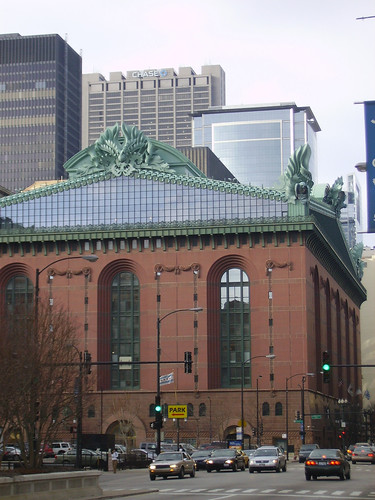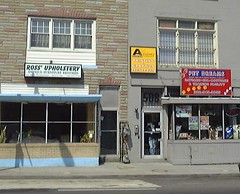It's not just one thing, it's many things
 Chicago Theatre photo by Laffy4K.
Chicago Theatre photo by Laffy4K.DC1974 adds:
There has been added housing, but slow. One thing that the Loop has done is property owners have converted office buildings (especially historically significant ones that could not be destroyed) into housing.
But the theatre district came first. It was really the arrival of the restored Chicago theatre and the subsequent de-malling of State Street that got this all jump started. That made the Loop a destination.
The School of the Art Institute then proceeded to build a dorm downtown -- with the attached Gene Siskel Film Center and ground floor retail. Also the opening of the library at the southend and the Cultural Arts department working with Loop storefronts to bring arts events to downtown (a few years ago, when I was living there and interning at the Museum of Contemporary Art, the summer dance festival had live mannequins in the windows of the major department stores that sprung to action and did various dance routines).
 Harold Washington Library photo by Stefanie Says (Flickr).
Harold Washington Library photo by Stefanie Says (Flickr)._______
This goes to show the value of multiple investments, but also the necessity of an uncompromising focus on quality. Many public investments made in this city and elsewhere are satisficed and/or value-engineered, and are not designed with the intent to connect and build and extend upon extant assets, which would spur further private investment. As a result, little subsequent investment obtains.
People usually take the wrong lesson from this, that "public investment" is a waste, and often futile, when the real issue is how the investment is made, how it connects, what it does. (It's the urbanness and urban design.)
I came to understand this over two very frustrating interactions with the DC Department of Housing and Community Development over projects on H Street. To the agency, quality--especially of design, didn't appear to be a major concern, it was all about "pushing products out the door" and expending the money in time so that it wouldn't have to be returned to HUD. As a result, with those two projects alone, one can argue that the $1.5 million of city-provided monies had a neutral to negative effect on spurring revitalization.
That's a problem of will and commitment, of execution, and maybe it is systemic and uncorrectable. But it doesn't have to be that way.
 The building on the left had its facade "improved" with DHCD-provided monies. Is this facade substantively different from before? Photo by Michael Berman.
The building on the left had its facade "improved" with DHCD-provided monies. Is this facade substantively different from before? Photo by Michael Berman.Index Keywords: urban-revitalization



0 Comments:
Post a Comment
<< Home